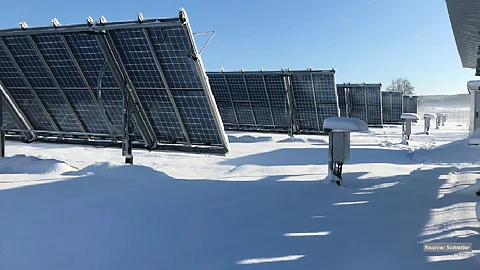

Modern solar trackers use AI-based controllers and smart algorithms to enhance performance, adjusting panel angles based on real-time data and terrain analysis for optimal energy capture
Advanced mechanical designs allow solar trackers to be installed on uneven and complex landscapes, expanding viable installation sites and optimizing land use
Tracker manufacturers are focusing on localizing production and lean designs to reduce costs, address supply chain challenges, and minimize environmental impacts
In recent years, solar trackers have evolved to become an indispensable component of large-scale utility solar projects, which represent the most significant application segment globally for PV. As these projects are highly cost-conscious, the integration of trackers not only enhances efficiency but also plays a critical role in managing expenses. While reliability is crucial for any utility-scale project, tracker manufacturers are constantly striving to strike a balance between maximizing efficiency and minimizing costs. But this is not the only equation to solve. Factors like ease of installation, maintenance requirements and land use optimization all play a critical role (see Global Solar Tracker Market Sees Significant Growth).
In response to these multifaceted demands, tracker suppliers have placed innovation at the front and center. Indeed, beyond the core function of maximizing energy capture, today's trackers are embracing cutting-edge technologies and are transforming into sophisticated tools with ever-expanding capabilities. They are becoming smarter, more adaptable, and seamlessly integrated into a wider ecosystem of applications.
At the forefront of this transformation lies the integration of AI-based controllers and smart algorithms. Imagine a tracker that adjusts its movements based on real-time terrain analysis, optimizing performance and minimizing the wear and tear of its key components. By processing data from sensors and weather forecasts, these AI controllers can adjust the panels to optimal angles, improving energy capture and reducing the risk of damage to the heart of the solar system: the PV panels. AI can also play a crucial role in path planning, allowing trackers to navigate complex environments with greater efficiency and autonomy.
Adapting to the terrain is another important development highlighted by almost every tracker supplier. The ability to adapt to varying terrains has opened new avenues for installing solar trackers in locations previously considered unsuitable for solar installations. Modern trackers are now designed with advanced mechanical and structural features that allow them to be installed on uneven ground, slopes and areas with complex geographical features. This adaptability not only expands the potential sites for solar farms but also maximizes land use. The tracker configuration also plays an important role here; while 2P gained popularity in the past, 1P configuration has been increasingly gaining traction for over 2 years now.
The concept of trackers is no longer confined to simple movements. An interesting trend is the integration of trackers into applications like agrivoltaics, where agriculture and photovoltaics coexist synergistically. In these systems, solar trackers are designed to ensure adequate sunlight for both solar panels and the crops beneath them. This dual use of land not only enhances the overall productivity of the land but also helps maintain agricultural output, thereby supporting sustainability in both energy and food production.
In response to global supply chain challenges and adding sustainability elements, there has been considerable emphasis on localizing the production of solar tracker components. Establishing local supply chains helps reduce transportation costs, minimizes delays in manufacturing and installation, and reduces the environmental impact associated with long-distance logistics. A lean design, yet retaining reliability is also an area of focus for tracker makers to reduce costs. In order to align with the latest advancements in solar panel technology, tracker makers also need to explore different module formats.
The text is an excerpt from the latest TaiyangNews Solar Trackers Market Survey 2024, which can be downloaded for free here.
